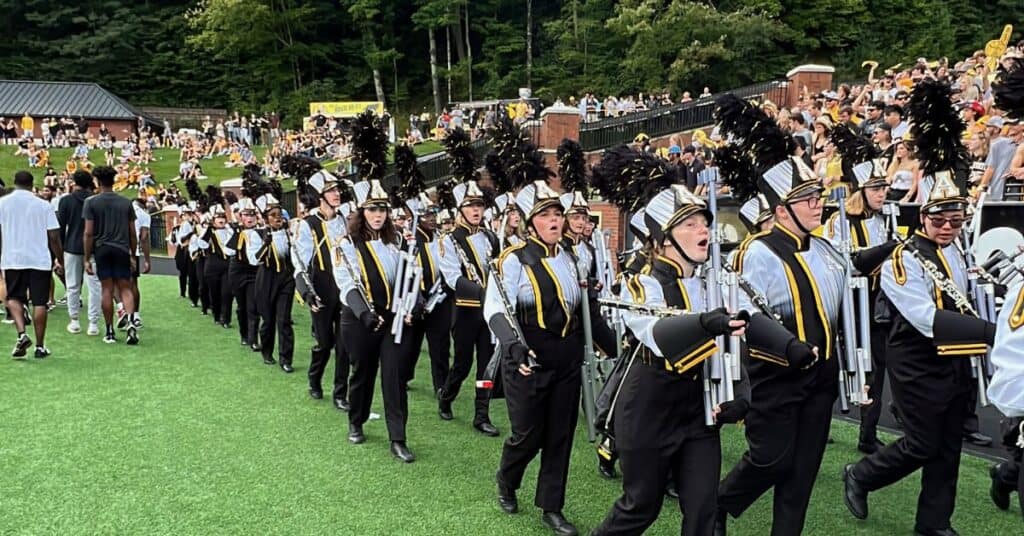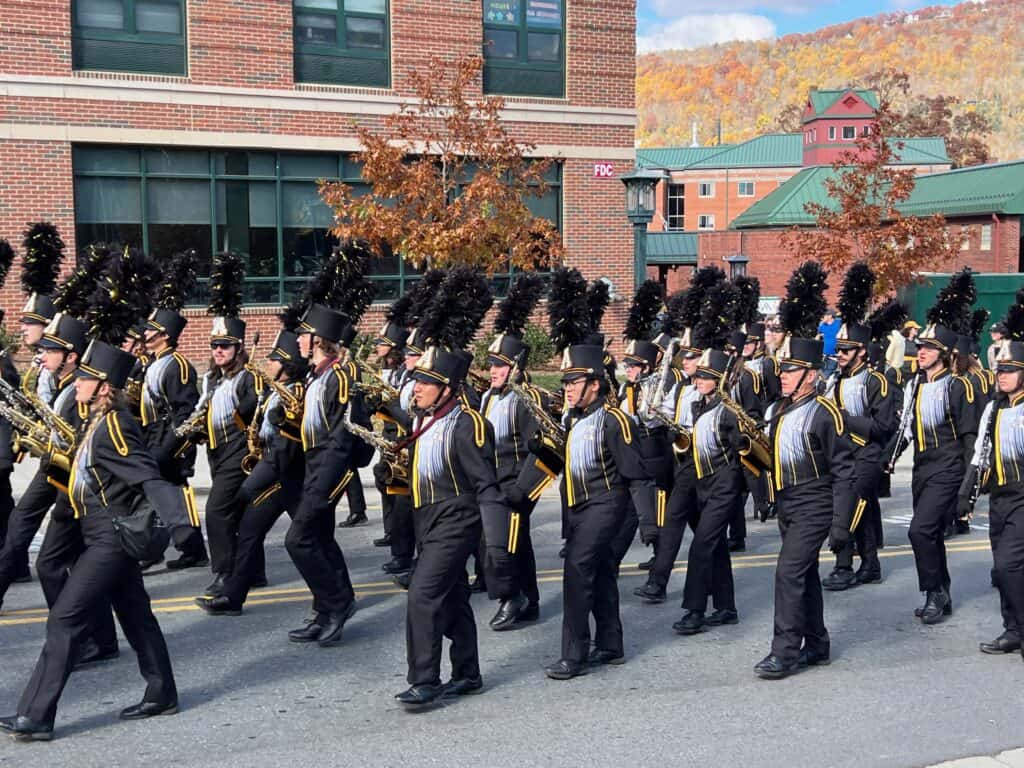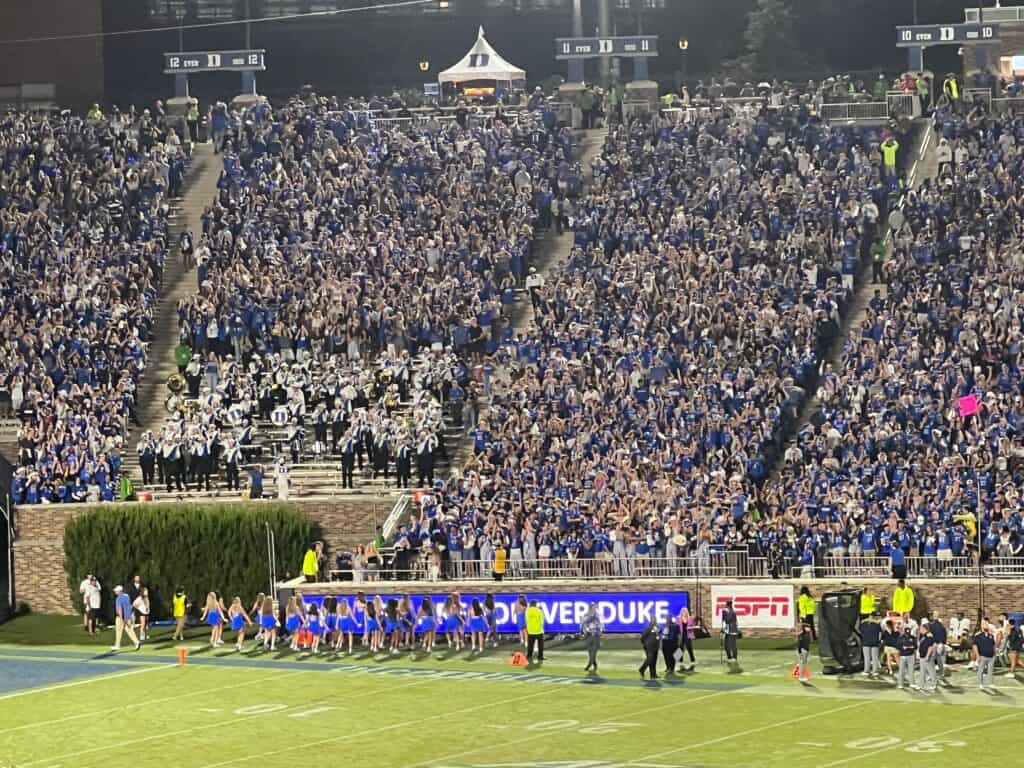Are There College Marching Band Competitions? Exploring the World of Collegiate Band Competitions.
College marching bands are a staple of American culture, adding to the excitement and school spirit of college football games and other events. However, many people may not be aware that college marching bands also participate in competitions.

These competitions can provide students with opportunities for exposure, content creation, skill-building, and the chance to showcase their talents and represent their school on a national stage.
One of the most well-known organizations for college marching band competitions is Bands of America (BOA). BOA hosts regional and national competitions for high school and college marching bands, including the Grand National Championships.
These competitions allow college marching bands to showcase their skills and compete against other top programs nationwide.
In addition to the competitive aspect, participating in BOA competitions can provide valuable exposure for college marching bands and opportunities for content creation and networking with other programs.
While not all college marching bands participate in competitions, those that do can benefit greatly from the experience. Competitions provide a unique opportunity for students to showcase their skills and represent their school on a national stage.
In addition, they offer exposure, content creation opportunities, and the chance to network with other programs. Whether or not a college marching band participates in competitions, it remains an integral part of the college experience, adding to the excitement and school spirit of events both on and off campus.
Overview of College Marching Bands
What are College Marching Bands?

College marching bands are groups of musicians who perform at various events, including football games, parades, and competitions.
These bands are typically made up of brass, woodwind, percussion instruments, a color guard, and majorettes.
College marching bands are an important part of school spirit and culture. They provide an opportunity for students to showcase their musical talents and positively represent their school. Additionally, they help to create a sense of community and pride among students, faculty, and alumni.
History of College Marching Bands

The history of college marching bands can be traced back to the mid-19th century. The first college marching band was formed at the United States Military Academy at West Point in 1868. The band was initially formed to provide musical accompaniment for military drills and ceremonies.
Over time, college marching bands evolved to become an important part of the college experience.
Today, college marching bands are known for their intricate formations, synchronized movements, and high-energy performances.
Benefits of College Marching Bands

There are many benefits to participating in a college marching band.
For students, marching band provides an opportunity to develop their musical skills, as well as their teamwork and leadership abilities.
It also provides exposure to a wider audience, which can benefit those pursuing careers in music.
For colleges and universities, marching bands can help to create a sense of community and school spirit. They also provide a unique form of entertainment for fans at sporting events and other campus activities.
To highlight the benefits of college marching bands, the following table compares the number of college marching bands in each state:
| State | Number of College Marching Bands |
|---|---|
| Texas | 87 |
| Ohio | 45 |
| Indiana | 39 |
| California | 36 |
| Florida | 34 |
In conclusion, college marching bands are an important part of the college experience.
They provide a unique form of entertainment and an opportunity for students to develop their musical skills and leadership abilities.
Additionally, they help to create a sense of community and school spirit that is important for the overall college experience.
College Marching Band Competitions
College marching band competitions are a great way for college bands to showcase their talent and compete against other bands.
These competitions are typically held during the fall season, which is also the same time as American football season.
College marching bands often perform at halftime shows during football games, and these competitions allow them to perform in front of a larger audience and compete against other bands.
Types of College Marching Band Competitions
There are two main types of college marching band competitions: national and regional.
National competitions are typically larger and more prestigious, while regional competitions are smaller and more localized.
In addition to these two types of competitions, some college marching bands also participate in exhibition performances.
National Competitions
One of the most prestigious national competitions for college marching bands is the Bands of America Grand National Championships, organized by Music for All.
This competition is held annually in Indianapolis, Indiana, and features some of the top college marching bands from across the country.
The Ohio State University Marching Band and the University of Michigan Marching Band are among the top competitors in this competition.
Regional Competitions
Bands of America Regional competitions are held throughout the fall season in various locations across the country.
These competitions are smaller than the Grand National Championships, but still provide a great opportunity for college marching bands to compete against each other.
The Ohio University Marching 110 and the University of Michigan Marching Band are among the top competitors in these regional competitions.
Exhibition Performances
Exhibition performances are non-competitive performances that college marching bands participate in.
These performances are typically held at marching band festivals or other events where multiple bands are performing. Exhibition performances allow college marching bands to showcase their talent without the pressure of competition.
In conclusion, college marching band competitions are a great way for college bands to showcase their talent and compete against other bands.
National and regional competitions provide a great opportunity for college marching bands to compete against each other, while exhibition performances allow them to showcase their talent without the pressure of competition.
College Marching Band Choreography
College marching bands are known for their impressive choreography and precision in their performances.
From intricate formations to synchronized movements, marching bands provide a visually stunning experience for audiences.
In this section, we will explore the choreography of college marching bands and how it has evolved over the years.
Choreography in College Marching Bands
Choreography in college marching bands has come a long way since its inception. In the early days, marching bands would march in formation while playing their instruments.
However, as the years went by, bands began to incorporate more intricate and complex choreography into their performances.
Today, college marching bands use a variety of choreography techniques to enhance their performances. Some of the most common techniques include:
- Block formations: This technique involves creating large, geometric shapes on the field using the band members.
- Dance routines: Many college marching bands incorporate dance routines into their performances, adding an extra level of entertainment for audiences.
- Synchronized movements: Band members will often move in unison, creating visually stunning patterns on the field.
Innovative Choreography in College Marching Bands
As demand for more exciting and engaging content continues to grow, college marching bands have been stepping up their choreography game.
Innovative choreography techniques are becoming increasingly popular, allowing bands to stand out from the crowd.
One example of innovative choreography is the use of props. Some college marching bands use props such as flags, banners, or even giant inflatable animals to enhance their performances. These props can add an extra level of excitement and entertainment for audiences.
Another innovative technique is the use of video projection. Some college marching bands use video projection technology to create stunning visual effects on the field.
This technology allows bands to create immersive and engaging performances that capture the attention of audiences.
College marching band choreography has come a long way over the years. From simple formations to innovative techniques, marching bands continue to push the boundaries of what is possible in terms of performance.
With their high level of exposure and demand for engaging content, we can expect to see even more exciting and innovative choreography from college marching bands in the future.
| Choreography Techniques | Description |
|---|---|
| Block formations | Creating large, geometric shapes on the field using band members |
| Dance routines | Incorporating dance routines into performances |
| Synchronized movements | Moving in unison to create visually stunning patterns |
| Props | Using flags, banners, or other props to enhance performances |
| Video projection | Creating stunning visual effects on the field using video projection technology |
Related Reading
- How Often Do College Marching Bands Practice?
- Joining a College Marching Band: Music Major Not Required
- Do college marching bands have a pit?
- Are there flutes in college marching bands?
- Do you get paid for college marching band?
- Are Clarinets Included In College Marching Bands?
- Do college marching bands have woodwinds?
Conclusion
In conclusion, college marching band competitions do exist and provide a platform for college marching bands to showcase their skills and compete against other bands.
These competitions offer an opportunity for marching band students to experience the thrill of competition and perform in front of a large audience.
Participating in college marching band competitions can be a positively life-changing experience for students. It helps them develop discipline, teamwork, and leadership skills.
They also get to travel to different locations and meet other college marching band students from across the country.
Teachers and parents also play a crucial role in making college marching band competitions a success.
They provide support and encouragement to the students, ensuring they are well-prepared for the competition.
Additionally, the community also benefits from these competitions, as they provide an opportunity for local residents to enjoy a live performance and support their local college marching band.
Here is a table that highlights some of the benefits of participating in college marching band competitions:
| Benefits of Participating in College Marching Band Competitions |
|---|
| Develops discipline, teamwork, and leadership skills |
| Provides an opportunity to travel to different locations |
| Enables students to meet other college marching band students from across the country |
| Offers the chance to perform in front of a large audience |
| Helps build a sense of community among college marching band students |
College marching band competitions provide a platform for students to showcase their skills, develop important life skills, and build a sense of community. These competitions would not be possible without the support of teachers, parents, and the community.
